Our daily activities have shifted online in today’s fast-paced digital era. We rely heavily on many online platforms to maintain our connections and increase productivity, whether taking online classes or participating in crucial meetings. Even though some people share images in their original format, there is a way to preserve image quality by converting them to PDF files. But it may not seem easy for those unfamiliar with the conversion procedure.
The versatility and broad compatibility of the PDF format, which guarantees the preservation of image fidelity, are driving up demand for the conversion of images into them. This article fills that need by offering four different ways to convert images into PDF files, each with benefits. By following this manual, you will understand the various methods for smoothly converting images into PDFs while prioritizing excellent image quality.
Can I Save a Screenshot as a PDF?
Wondering if you can convert screenshots to PDF? This section is for you! PDFs have established themselves as standard document-sharing and archiving format due to their dependability, consistency, and flexibility. The integrity of the document’s layout and formatting is ensured when using PDFs, making a professional presentation across various devices. This is relevant to many documents, including but not limited to business analytical reports, digital publications and research papers, legal contracts, screenshots, and more.
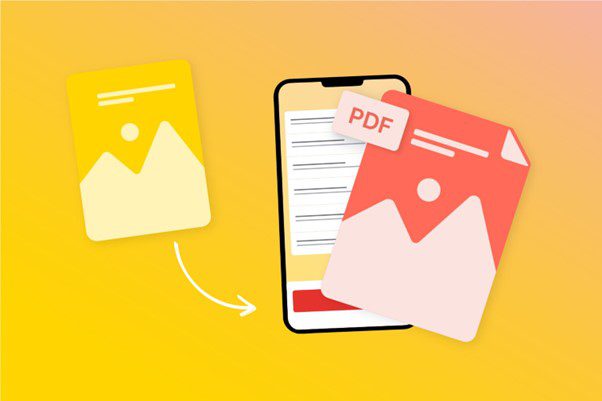
How To Convert ScreenShots To PDF
To respond, you can save a screenshot as a PDF. Maintaining image pixels and quality, ensuring device compatibility, and providing simple sharing and printing are just a few advantages of converting a screenshot to PDF format. The good news is that, depending on your device and operating system, there are numerous ways to convert screenshots into PDF files. Various third-party tools and programs created especially for this use are available.
Why Do You Convert Screenshot to PDF?
Are you skeptical about the need for PDFs? Let us help you! When transferring images, image size and quality are frequently people’s two main concerns. While maintaining the image quality to communicate the intended information effectively, they want to ensure the file size is manageable for simple sharing and transmission. The PDF file format saves the day in this case. By offering effective compression algorithms that reduce the overall file size without sacrificing the visual fidelity of the image, PDF allows users to balance file size and image quality.
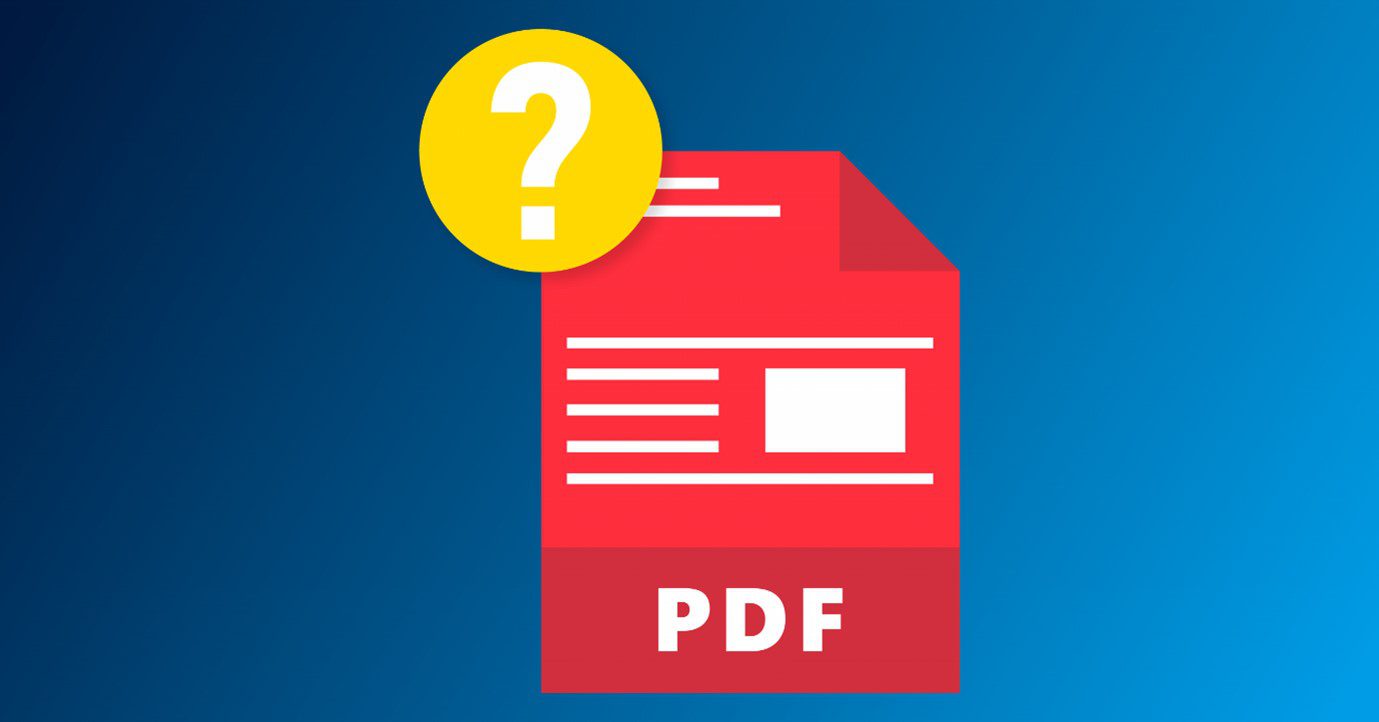
Why Do You Convert Screenshot to PDF
🚩 File size reduction
One benefit of turning a screenshot into a PDF is file size optimization. Comparing PDF files to image formats like JPEG or PNG, the compression algorithm used by PDF files is typically more effective.
Smaller file sizes are advantageous when sharing the screenshot online or emailing it. Faster transfer speeds are achieved because less bandwidth is needed to upload or download the smaller file. This can be especially useful when sharing screenshots with larger dimensions or having trouble connecting to the internet.
🚩 Image Quality Preservation
An important consideration when converting screenshots to PDF is maintaining image quality. Consider taking a screenshot of a software program’s in-depth graph or chart. Sharing a screenshot in its original format, such as a JPEG or PNG image, may lead to a degradation in quality due to the compression algorithms employed by these formats. This compression process can cause the loss of intricate details and result in hazy text or artifacts, adversely affecting readability. However, you can keep the image quality and resolution by turning the screenshot into a PDF.
🚩 Simple distribution and sharing
PDF files naturally lend themselves to sharing and distribution, which makes them an advantageous format for sharing screenshots. PDFs are simple to attach to emails, making it simple to share screenshots with others. Cloud storage services like OneDrive, Google Drive, and Dropbox widely support them. These platforms allow you to upload your screenshots as PDF files, which you can link to. This eliminates the need to send individual attachments or worry about file size restrictions by enabling multiple recipients to access and download the screenshots whenever convenient.
How to Convert Screenshot to PDF on PC?
There are various ways to convert a screenshot to a PDF file on a PC, including built-in utilities, external programs, and online converters. The top four strategies for creating PDFs from screenshots will be covered in this part. These techniques cover commonly used third-party programs and the operating system’s built-in tools. Besides this, we will go over how to use online conversion tools, which offer a practical substitute for exporting screenshots in PDF format, so let us get started:
Use Online Image Annotation Tool
An intuitive and user-friendly platform for annotating and exporting screenshots can help you handle numerous tasks such as image annotation and visual presentations. Gemoo’s Free Online Image Annotation tool quickly can help users to mark, highlight, and add text to screenshots and images. Besides this, it supports exporting annotated screenshots and pictures in many formats, including PNG, JPEG and PDF, making it simple to incorporate them into reports, presentations, or other documents. Let us examine the steps now:
Step 1. Visit Gemoo’s free online image annotation tool on your favorite browser.
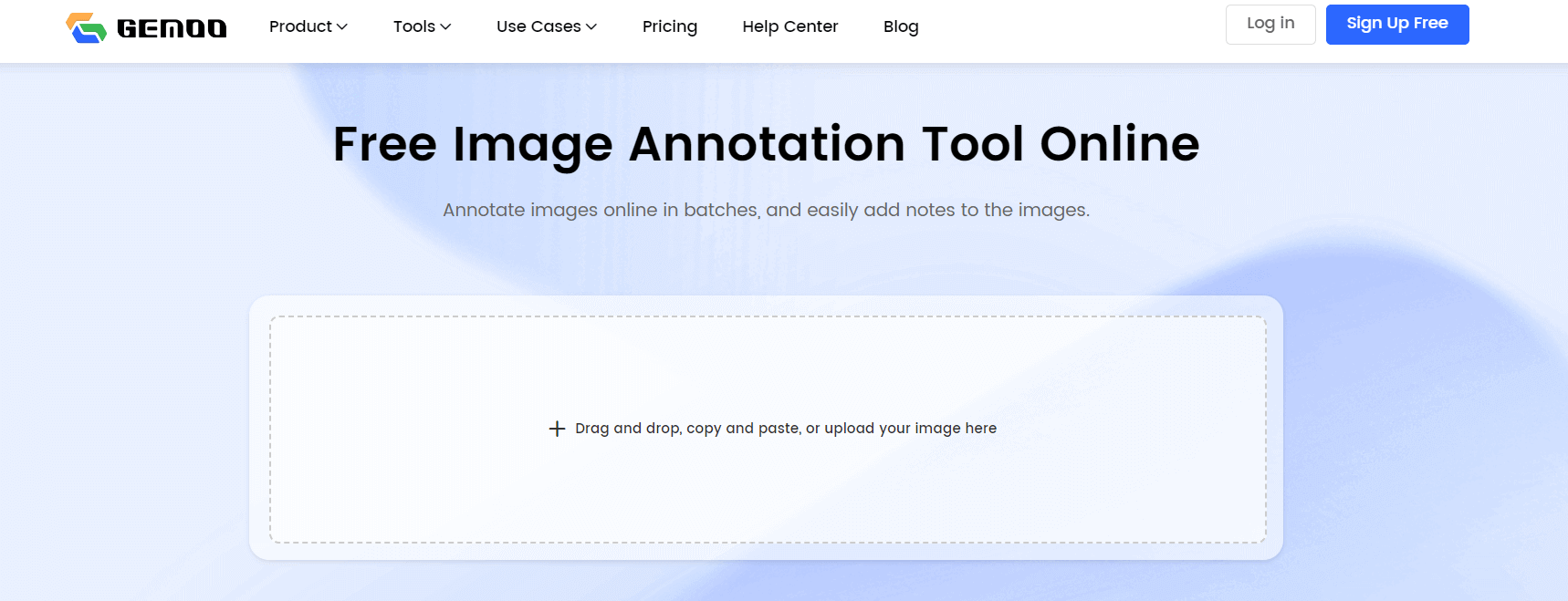
Gemoo Free Online Image Annotation Tool Landing Page
Step 2. Upload the screenshot from your computer – you can import, drag and drop, or copy and paste it, and wait until it is uploaded.
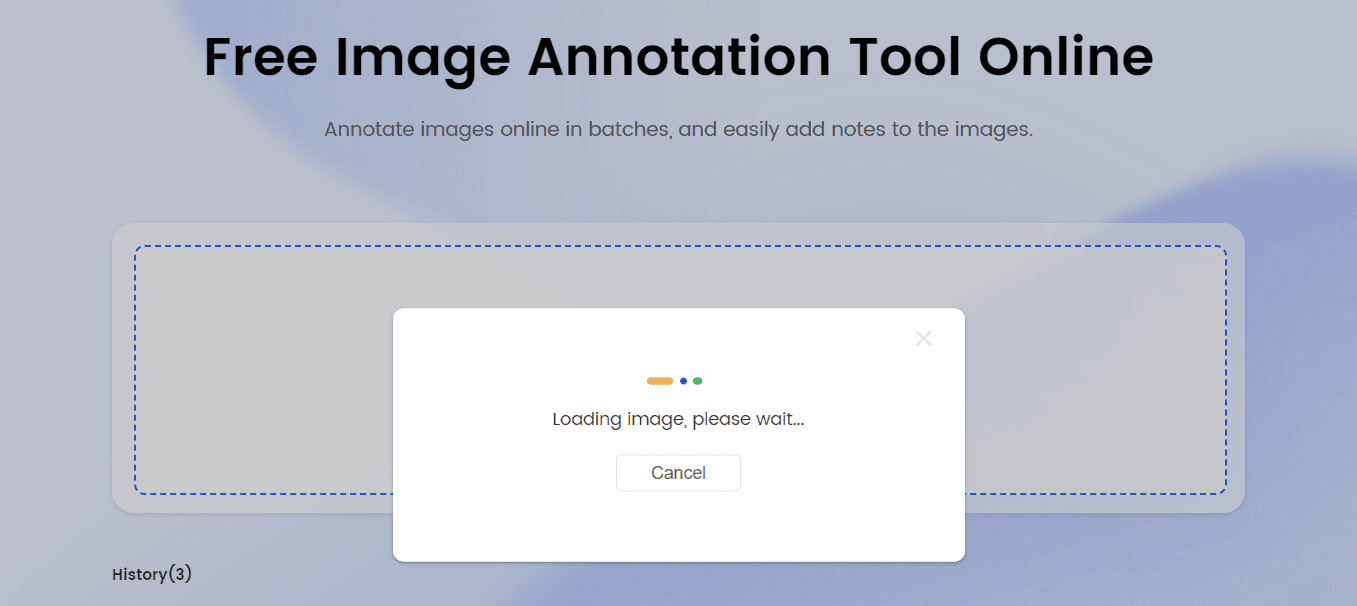
Upload Your Screenshot from Your Computer
Step 3. Use the toolbar to annotate the image online. Notes can also be easily added to your image. Afterward, click on the download button, and choose “PDF” from the dropdown options.
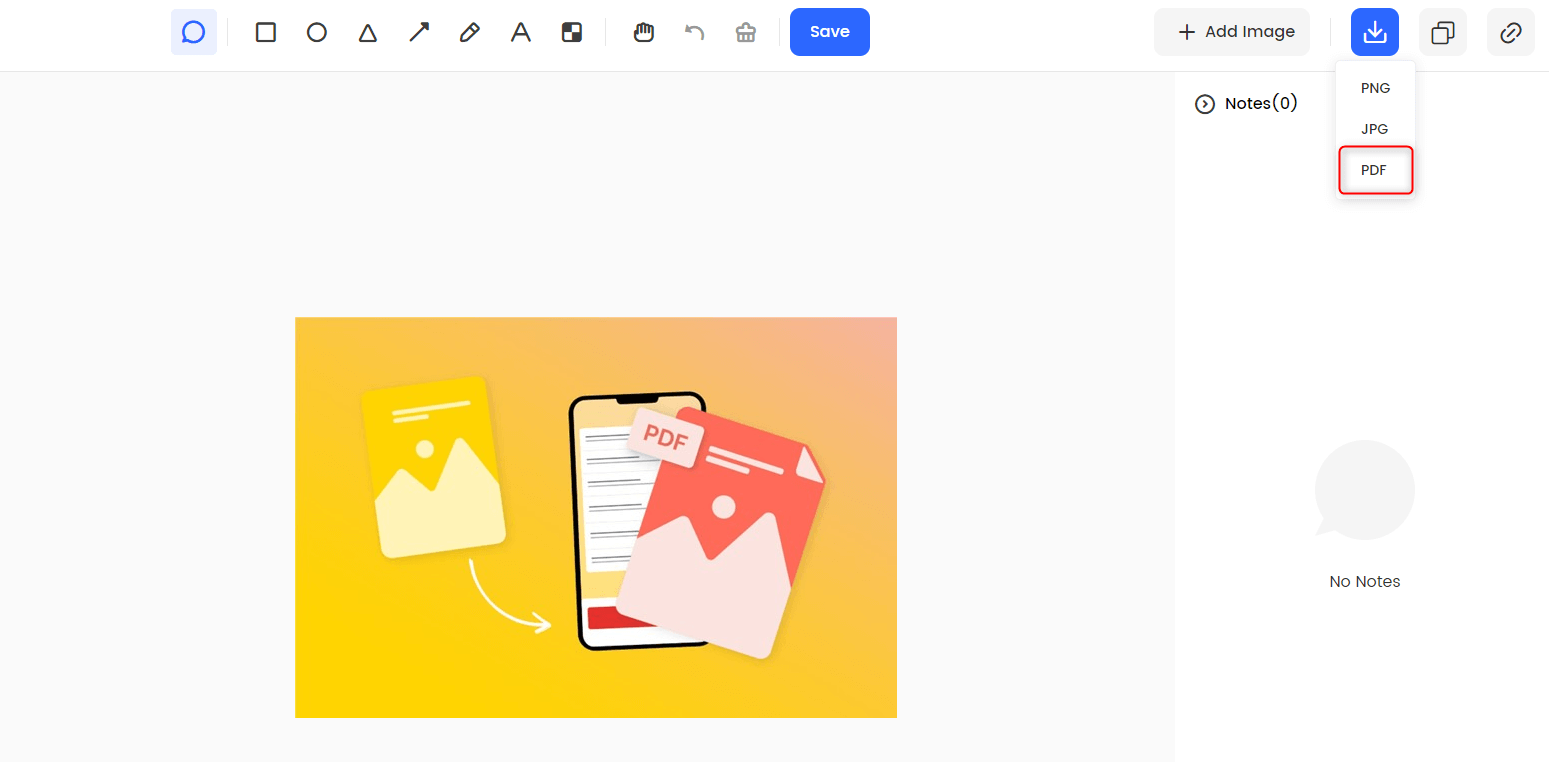
Convert Screenshot to PDF
Use Microsoft Word
The popular word processing program Microsoft Word was created by Microsoft. It is a piece of the Microsoft Office family of tools for productivity. Although creating, altering, and formatting text-based documents is the main function of Microsoft Word, it also has other salient features, such as the capacity to transform files to PDF format. Using that program, users with Microsoft Word installed on their computers can easily convert screenshots to PDFs.
Step 1. Launch Microsoft Word.
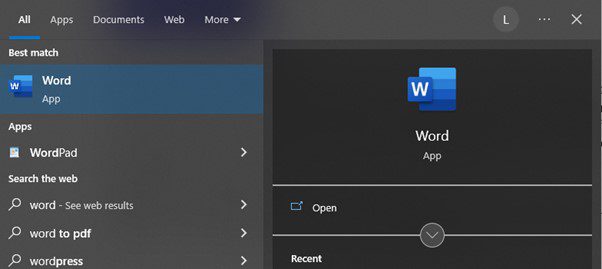
Launch Microsoft Word
Step 2. From the top toolbar, select the “Insert” section.
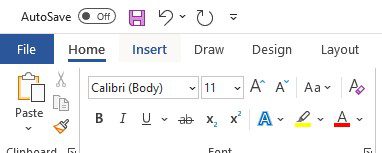
Click the Insert Tab
Step 3. Click the “Pictures” button below the “Illustrations” group. Select the desired image to transform to PDF from there, then click “Insert” to continue.
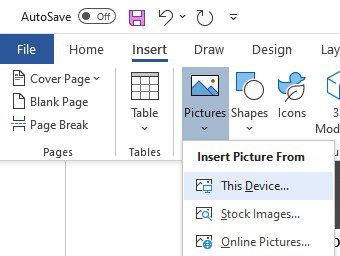
Click The Pictures Button To insert Your Image
Step 4. After successfully inserting the image, navigate to the “File” tab and select “Save As.” Specify the desired destination where you want to save the PDF file. From the “Save as type” dropdown menu, opt for “PDF (*.pdf).” Finally, click the “Save” button to complete the conversion process and save the image as a PDF file.
Use Preview
Users can view, edit, and annotate various file types, including images and PDFs, using the innate application on Mac computers called Preview. It is a versatile tool already installed with macOS and provides several features for working with digital documents. A screenshot image file can also be opened in Preview and converted to a PDF document using the program’s built-in PDF conversion feature:
Step 1. Double-click the screenshot image to open it in Preview.
Step 2. Select “Print” from the “File” menu (or use the keyboard shortcut “Command + P”).
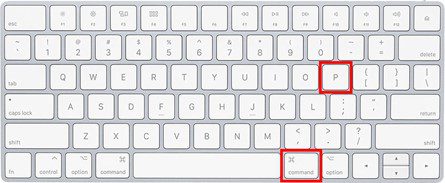
Click Comand and P Button to Open The Print Page
Step 3. Click the “PDF” button in the lower-left corner of the Print dialogue box.
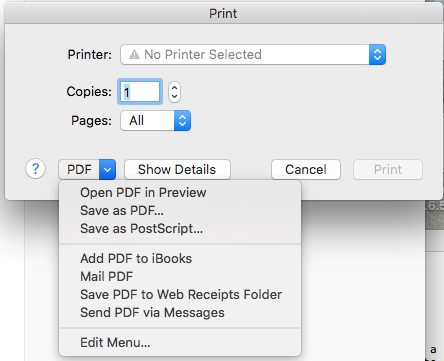
Click on Save As PDF Button
Step 4. Select “Save as PDF” from the dropdown menu, enter a name and location for the PDF file, and then press “Save.”
Use the Photos App
Users can manage, arrange, and edit their photos and image files using the Photos app, an innate program that comes with macOS. It offers a simple user interface with many features to improve and arrange your photo library. It has an export feature that enables you to change the format of certain images, including screenshots, into other file types, like PDFs. This feature lets you quickly convert your screenshots to PDF format within the Photos app.
Step 1. Go to the Applications folder or search for the Photos app in the search bar to launch it on your Mac.
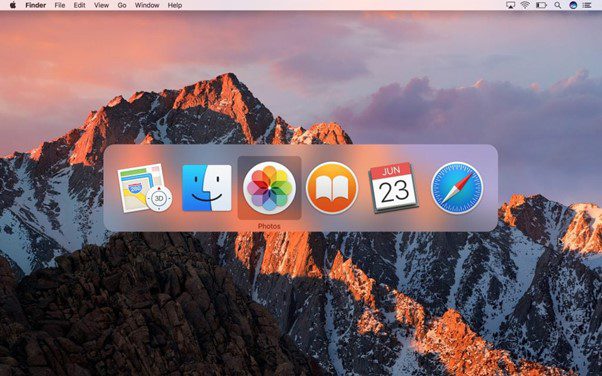
Open The Photos App On Your Mac
Step 2. Find and choose the desired screenshot image you wish to convert to PDF from your collection of photos.
Step 3. Once you have chosen the image, click on the “File” menu at the top of the screen. From the options presented in the drop-down menu, select “Export.”
Step 4. Select “PDF” from the options in the Format dropdown menu within the Export dialogue box. After providing a name and location for the resulting PDF file, click the “Export” button to complete the process.
How to Convert Screenshot to PDF on Mobile Phone?
Using different mobile applications found on the relevant app stores, converting a screenshot on your iPhone or Android device to a PDF file is simple. These programs offer user-friendly user interfaces and functionalities created especially for converting images, including screenshots, to PDF format. You can easily turn your screenshots into PDF files with just a few taps. You can quickly turn your screenshots into PDF files on your mobile device, making sharing, storing, or printing them simple. Consider the iLovePDF tool as an example, which allows iPhone users to convert screenshots to PDF by following these instructions:
Step 1. Download and launch the iLovePDF Mobile App on your device.
Step 2. Within the app, use the “Image to PDF” tool.
Step 3. To upload or capture an image on an iOS device, press the “red plus +” button. Select “Continue” and then configure the format options.
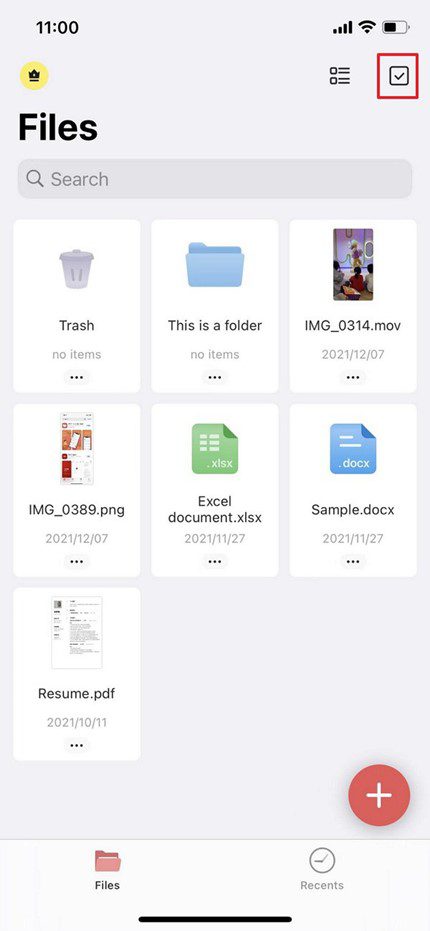
Click on The Red Plus Button
Step 4. Select the “Image to PDF” option to transform your images. After the transformation, select “Download PDF” to save the files to your local memory or to upload the PDF to cloud platforms.
By using the iLovePDF Mobile App, Android users can easily convert their screenshots to PDF files by following these steps.
Step 1. Download the iLovePDF Mobile App or launch it if you already have it.
Step 2. Find the “Image to PDF” tool in the app’s tools section.
Step 3. Locate the image file from your storage on an Android device, then proceed to the next step and select the desired format options.
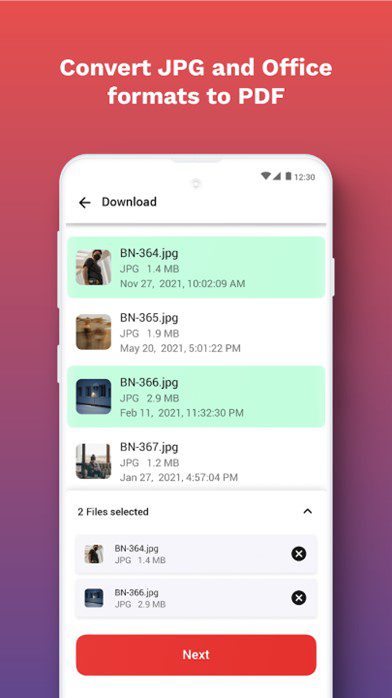
Select Images You Want To convert And Click Next
Step 4. Select “Image to PDF” to begin transforming your images. When finished, store the PDF file in your device’s local storage or upload it to cloud-based storage like Google Drive.
Final Thought
Finally, understanding how to convert screenshots to PDFs is crucial in the digital era. It has benefits like reduced file size, preserved image quality, and simplicity in sharing and distribution.
This article comprehensively explains four distinct methods for converting images into PDFs on various devices, including PCs, Macs, and mobile devices. If you find this information valuable, we kindly request that you share it with your family and friends. Please also leave your thoughts in the comments section below.
